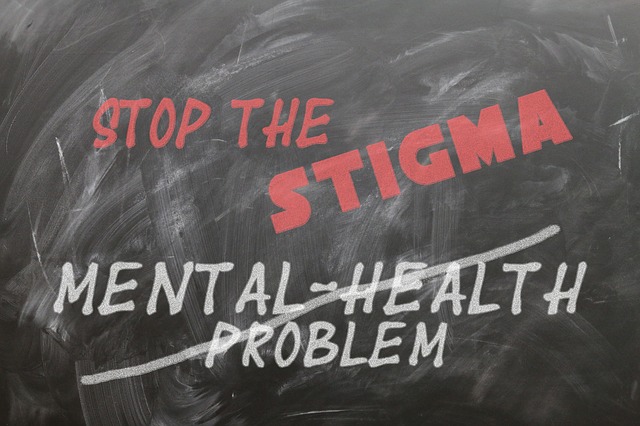PATIENT EXPERIENCE
Overcoming Stigma in Health Care Marketing: Essentials for Improving Care
Breaking down persistent stigma associated with health conditions such as substance use disorder and lung cancer is an essential role for health care marketers, and a necessary component of assuring increased quality of care for all Americans.
Experts agree that this topic is fundamental to the continued evolution of health care marketing, and it will be discussed in detail during a live symposium at the Society for Health Care Strategy & Market Development (SHSMD) Connections Conference, being held Sept. 11-14, in National Harbor, Md., as well as in an accompanying podcast.
“There is such stigma surrounding addiction and mental health disorders that it prevents people from getting the lifesaving help that they need,” says Melissa Fors, vice president of marketing strategy at the Hazelden Betty Ford Foundation, in Center City, Minn. “We are constantly trying to break down that stigma so that people feel it’s OK to ask for help.”
“We know that these issues exist in other health conditions, for instance obesity and HIV/AIDS, but in addiction and mental health, there is an awful lot of stigma that prevents people from reaching out and asking for help,” Fors adds.
When a person is struggling with substance use, they will often bypass normal channels of assistance, such as friends, neighbors, school officials or even health care providers, according to Fors.
“They suffer in silence and don’t know where to turn,” she notes. “If they had diabetes or other health conditions, they might ask their normal channels for that support.”

How Hazelden Betty Ford Handles Stigma
At Hazelden Betty Ford, the nation’s largest nonprofit addiction treatment and mental health provider, Fors and her colleagues are working to address stigma in a number of ways.
One approach involves switching to “person-centered” language, which means terms such as “substance use disorder” instead of “substance abuse.” This, Fors notes, is key to clarifying that an individual is not simply “abusing substances,” but living with an established, treatable disorder.
“You don’t say a person is cancer; you say a person has cancer,” she says. “We would like to make that switch with substance use disorder and addiction.”
In addition, Hazelden Betty Ford’s health care marketing focuses on positive imagery and language.
“Often, marketing around substance use disorder focuses on imagery of people using drugs,” Fors notes. “You don’t see the happy, thriving family that comes after they have received lifesaving treatment. We focus on the positive imagery, the ‘after’ images, the hope and positive aftereffects rather than shaming people for using alcohol and other drugs.”
Another nuance that is specific to addiction treatment involves false advertising and promotion from unethical providers. In 2017, Google placed a ban on advertising by companies claiming to offer addiction treatment services, as consumers were being duped by false claims and outright scams. As a result, organizations must receive certification in order to advertise treatment services on Facebook or Google.
“[Doing so] helps to build trust and have more safety in the messages coming to vulnerable families,” Fors explains. “This is another trigger when you think about stigma: People are very vulnerable, and, if they finally reach out for help, they could be looking at an unethical provider.”
The American Lung Association (ALA) is using similar approaches to crack down on misconceptions regarding lung cancer.
“Stigma is defined as a mark or a brand of disgrace associated with a particular circumstance or quality,” notes Dan Jason, the national director of marketing and communications at the ALA. “Sadly, stigma plays a major role in the lung cancer experience for most people diagnosed with this disease.
“Unfortunately,” Jason adds, “feelings of fear, guilt and blame often affect their quality of life and quality of care. Stigma is also linked to disease-related distress and poor health outcomes in lung cancer patients.”
The first step in counteracting stigma, according to Jason, involves raising awareness of the fact that anyone can get lung cancer, and no one deserves it.
“As an organization, we are committed to delivering messages about lung cancer that do not perpetuate stigma and empowering those living with lung cancer,” he says. “It is crucial that as health care marketers, that we treat people in an empathetic, nonjudgmental and supportive way.”
So, how can health care marketing be utilized as a force of good for the general public and the health care community? The answer likely encompasses the importance of education and responsible messaging about these and other health care challenges.
“If we can, via our marketing, offer people resources and education on what to do, that is the most important thing,” Fors says. “It almost means marketing is more important in these stigmatized health care conditions where we can offer ethical, non-stigmatizing, non-shaming education and resources. By being more open, health care marketing can further break down existing stigma. There has been an awful lot of progress, but there is still room to grow and do better.”
Learning More
- Register for SHSMD Connections 2022 in-person conference this September in DC to attend Melissa and her co-presenter’s breakout session “How Health Care Marketers Can Impact Stigma.”
This article features interviews with:
Melissa Fors
Vice President, Marketing Strategy
Hazelden Betty Ford Foundation
image credits: istockphoto.com/FatCamera, Gerd Altmann from Pixabay